Prescription Information

Lens Materials:
CR39,
Polycarbonate,
Trivex & More

Lens Technologies:
Digital Free Form,
Progressive, Bifocals

Lens Colors: Tints,
Polarized,
Transitions & Mirrors

Lens Coatings and
Add Ons

FAQ's

How to Read a
Prescription

Glossary of Terms

Lens Materials:
Prescription lenses can be made out of 3 main materials: Glass, CR-39 optical plastic (including high index plastic), and impact-resistant polycarbonate. Here are the advantages/disadvantages of each material:

Mineral Glass
Glass: Glass was the original material prescription lenses were made out of, however, it is now used on a limited basis. Glass offers the best optical clarity, meaning that there is virtually no distortion in glass lenses. This is why it is the material of choice in manufacturers such as Ray-Ban, Revo, Vuarnet, and Serengeti. However, glass is the least impact resistant of all of the material, and may shatter upon impact. Shattering means that the lens will split into small pieces which can easily enter the eye and cause permanent eye injuries or even blindness. Therefore, glass is not recommended for any active sports where a fall or a hit by a ball can shatter the lens. It is also the heaviest of all the materials which may limit the length of time these lenses can be worn. Also, the thickness and weight of glass increases as power increases. Therefore, those with higher prescriptions may find it uncomfortable to wear glass lenses. However, glass is the most scratch resistant of all materials.

CR-39 Plastic
CR-39 refers to the type of plastic that is used to make prescription lenses. This is optical plastic and provides very little distortion (more than glass but less than polycarbonate). Plastic is the most commonly used material for prescription lenses today. It is more lightweight and thinner than glass making it comfortable to wear. It is more impact resistant than glass, but may still break and shatter upon impact. Therefore, it is not recommended for active sports. It is more scratch resistant than polycarbonate, but will scratch if not properly taken care of. CR-39 does not have any UV protection. Thus, if you wanted to make sunglasses out of CR-39, you will want to add on a UV coating.

High Index Plastic
High index lenses thin out the weight and thickness of high prescription lenses. This is often recommended for those with prescriptions above a 4.00, but can be used by anyone who cosmetically wants to improve the look of his/her glasses. It is a plastic material, so it is not recommended for those who will be using his/her glasses for contact or ball sports.

Polycarbonate
Polycarbonate is an impact resistant material. It is 10x's more impact resistant than regular CR-39 plastic. Most good polycarbonate can be shot at with a .38 caliber bullet and not shatter. It is becoming used more and more today especially for sports eyewear and sunglasses. Although polycarbonate is impact resistant, it should not be consider breakproof or shatterproof. However polycarbonate is the strongest material and will have the tendency to break in large pieces versus small pieces which are not as dangerous. Polycarbonate is thin and light so it is perfect for those with higher prescriptions. It is 43% lighter than CR-39 plastic. Polycarbonate lenses have the most distortion of any other lens material through a microscope. However, only those very sensitive to distortions will really notice it. Although tough, the material is actually softer meaning it is more susceptible to scratches. Thus, polycarbonate must be handled with care. A scratch resistant coating can be added to make it more scratch resistant and give it a warranty against scratches. UV coating is also standard in polycarbonate lenses so an additional charge for UV does not need to be added. For better optical clarity, see the Trivex lenses. For scratch resistance, add the Optifog coating which includes a tough scratch coating with it.

Lens comparison as viewed through an illuminated polarized lens. Phoenix brand of Trivex on left, polycarbonate on right. Notice the internal stress and distortion in polycarbonate lenses.
Trivex
Trivex originated in the defense industry. It is as safe as polycarbonate but offers better optical clarity (similar to CR-39 plastic). They are also more scratch resistant than standard polycarbonate and is more resistant to chemicals. Trivex meets FDA and ANSI Z87.1 impact safety standards at 1.3mm. It is the lightest lens available (slightly lighter than polycarbonate). 100% UV protection is also standard and does not need to be added.
Lens Technologies
Eyeglass lenses have come a long way since they were invented in the 13th century. Technology has really evolved over the last few decades. Traditional lens manufacturing relies on molds of the material, and the prescription being "ground" into the base lens. We still use this same technology today. However, there are more technologies available for those that want more advanced lenses. For multi-focal wearers, no-line progressive lenses give us the ability to see clearly at any distance, even as our eyes age. Let's look at some of technologies A Sight for Sport Eyes offers.

Standard Lens Technology
In standard lens manufacturing, what we call a "semi-finished" blank is chosen based on the prescription and required lens material. The lens is then "surfaced" by grinding into the lens with a tool to create the right prescription. Standard lenses provide good optical correction, and this is what how most eyeglasses are made. However, newer technology can help those with higher prescriptions or athletes that require more precise vision for optimal reaction time.

Digital Free Form Technology
Free-form lens technology has been a lens advancement that has particularly helped us in the sports eyewear arena. Athletes need the most refined vision. The frames we use for sports are often wrap around and sit closer to the face to protect the eye from injuries, wind and dirt and debris. In the past the curved frames caused visual issues, especially with higher prescriptions. The new digital lens manufacturing allows us to fill much higher prescriptions in wrap frames than we ever were able to in the past. Unlike traditional lenses, which are molded or ground to a standard curvature, free-form lenses are digitally designed by a computer and manufactured using with a more refined tool to allow for extreme precision, customizing every point on the lens surface to match the wearer's exact prescription and visual needs. The technology accounts for frame wrap, tilt, and position of wear, optimizing vision in all areas of the lens. The lens accuracy is within 0.01 diopters compared to 0.125 diopters in standard lens technology. It reduces distortions, particularly at the edges. In laymen's terms, this provides more "edge to edge" clarity allowing eyes to move more freely within the lens and still have good vision in all angles. This is particularly important for athletes where split second decisions are being made.
Free form lenses are recommended for any of the frames you see on our site marked at RX8, and for those with prescriptions above +/- 2.00. Digital technology may be required for wrap frames with prescriptions over +/-4.00. See product page for further details.
How to Read a Prescription
Here is an example of what your prescription from your doctor may look like. We have circled the important components of the prescription so you understand what the numbers refer to:

Or here is a more in depth analysis of a prescription. Prescriptions can be written in what we call "minus" cylinder (most common) or "plus" cylinder. This refers to the sign of the 2nd column (cylinder) of the prescription. For instance, the prescriptions below are equal, the only difference is whether or not the cylinder has a + or - sign in front of it.
OD (Right) -3.50 -1.00 x90 Or R -4.50 +1.00 x180
OS (Left) -2.25 -0.50 x110 Or L -2.75 +0.50 x20
Let's break it down a bit further.
OD refers to your right eye.
OS refers to your left eye.
-3.50 and -2.50 (first column) refer to the spherical part of your prescription. Your prescription may show SPH in a grid above. This is the "main power" of your prescription. This is what we call the "power" (meaning strength) of the full lens.
The 2nd column is what we call the "cylinder" or astigmatic part of your prescription. (the 1.00 or 1.50 in the above example) The axis is the placement of this astigmatism power within the lens. If you think about a protractor, the axis tells at a certain axis, add this extra band of power to the lens essentially. The axis will always be a number between 0 and 180 degrees.
Now let's look at why the two prescriptions are equal. It is simple algebra. If you add a positive and negative, you subtract. If you add two negatives or two positives, you add. When converting the prescriptions the axis also changes by 90 degrees.
So let's break down that right eye above again (plus cylinder version as the industry favors the minus cylinder version)
-4.50 +1.00 x180
To convert it, we add -4.50 to +1.00 which equals -3.50. Then we change the sign of the cylinder and the axis by 90 degrees. Thus -4.50 +1.00 x180 becomes -3.50 -1.00 x90
Why does this matter? If you are purchasing a step diopter swim goggle, you would use this number to determine what power to get as the swim goggles will only correct for this first column of power. Again, we want to use the minus cylinder version of the product.
If you do not make the conversion, you will may make the mistake of ordering -4.50 and -3.00 lenses if you have plus cylinder. This is why the conversion is important because in this instance, the right step diopter lenses to order is really -4.00 and -2.50 lenses.
Why is it -4.00 for the right eye? Since the swim goggles only come in 0.50 or 1.00 steps, the cylinder column will help us determine whether to round up or down. For the swim goggles, you want to take 1/2 the cylinder power, add it to the sphere and round down.
So 1/2 of -1.00 is -0.50. Add -0.50 to -3.50=-4.00
Please note: If you have plus (+) number in front of the first number (sphere), no conversion is necessary. This just means that you are farsighted rather than nearsighted (minus prescriptions). If the first and second numbers are plus (+), then you will need to make the conversion.
If you are unsure, A Sight for Sport Eyes opticians are standing by to do the math for you.
What is a PD?
We also need a PD measurement in order to properly fill your prescription. This may not be written on your prescription as is a measurement taken by the optician filling the prescription. However, since we do not have you sitting in front of us to take the measurement, we need you to provide this information to us.
A PD refers to your pupil distance, or the distance between your pupils. Do not attempt to take this measurement yourself in the mirror. When you look in the mirror you would be taking a "near" PD as your eyes converge. You want to take a "distance" PD so you will need a helper to measure this for you. The measurement is the distance from the center of one pupil to to center of the other pupil in millimeters. (If you take it in inches we can do a conversion to mm for you). A PD ensures that the center of the lenses line up with the center of your pupils where you will get the best vision. If you don't provide one, we will use a standard unless we feel that your prescription is too high and too much distortion will be induced if we use a standard one.

PD is usually written like this: PD=60. Or it could be split per eye like 30/30. There are also apps that you can buy from Google Play or ITunes stores to measure as well.
Note: PD is not necessary for step diopter products.
Bifocals or Progressives?
Bifocals and progressives require taking very precise measurements with the glasses on your face. Just like the PD tells us where to center that "sweet spot" of the lens in front of the pupil side to side, we don't know how the frames will fit on your nose and ears. Everyone has different facial features. Therefore, the centering of the lens top to bottom requires more precise measurements.
The measurement is frame dependent because every frame has a different shape. Thus, measurements from previous pairs (unless they are the exact same frame) will not work.
Many companies will sell you progressives online and put the "seg height" at a standard position. However, if your pupil is not centered over this spot, it will cause your prescription to be too strong, too weak or cause you to hold your head at an unnatural position causing neck cramps, or slow reaction times. Thus, we don't think it is ethical to fit progressives online.
However we do have options.
- We can fill them in our retail store in Oregon. This way we can properly measure you.
- You can purchase the frame and then either have someone locally measure you for progressives or contact us for other ways to get measurements done. You can then send the frame back for the progressive lenses once that proper measurements are taken.
If you just need reading power to read a phone, computer, change a flat, tie a fly, read a map or scorecard, etc. we have press-on bifocal segments that can be purchased separately. These are bifocal segments that use static electricity to stick to the back of your lenses. This allows you to put it out of your line of distance sight as well.
Some products such as dive masks, we can put the bifocal very low in the mask at your own risk. Contact us for more information.
Are you sure you need bifocals/progressives?
Most sports utilize mostly distance vision. For fast moving ball sports like baseball, racquetball, etc. you can't move your head fast enough to get into the intermediate/near portion of the lens so paying the extra money for progressives/bifocals may not be of any benefit for you. In these circumstances, single vision is the best and least expensive option. Or if you are snorkeling, you won't need to read so single vision is probably the best option as well.
For cyclist who need to read bike computers, you may benefit from progressives as you often switch between distance and intermediate during the ride and have time to move your head to get into the right position. Fishermen may also benefit from having full near vision to tie flies, bait hooks, etc.
Also, if you get the glasses in single vision and really decide you need to have progressives, you can always utilize our one time exchange policy (on most products) to send the glasses back for the one time remake into progressives or bifocals.
Lens Tints and Colors
When doing prescription lenses, we are custom making a prescription lens which allows us to customize the lens to what works best for how you are going to use the glasses.
Don't pay attention to the lens that comes standard in the glasses non-prescription. That lens is going to be going into the trash and replaced with a custom made lens for your Rx.
If you are doing manufacturer direct product, the options would be limited to what the manufacturer offers on the brand page. However, we can make lenses with our lab for most full frames and do any of the color tints listed below. Please note: Tint colors will vary from lens material to the thickness of the prescription so these are sample colors. Your prescription may turn out slightly differently. CR-39 lenses will absorb tints better, but polycarbonate does come pre-tinted in both gray #4 and brown #4 for darkest available tints no matter what the prescription. Trivex will not tint as dark if that is what you are going for.
Tints come in levels from #1 to #4. #1 will be near clear, #4 will be super dark (too dark to legally drive with--Typically we can only do up to a level #3 lens due to this "legal limit". Some manufacturer direct lenses that are made in other countries do allow for level #4 tints, but you cannot use these products for driving as they will slow your reaction time, and not "legal" to use behind the wheel in the US.
Tints can also be "gradient" where they fade from darker on top to lighter on the bottom. Available by special order.
We often get asked what lens color is best for what?

Generally speaking, gray is the most popular if you are just needing them for everyday, all purpose sunglasses. Gray is neutral and doesn't color distort. It will give you true color perception just darkened.
Gray will "seem" darker if you are light sensitive (though actual light transmission may not be any different than other lenses).

Brown or Amber based lenses will increase contrast and depth perception. This is great for overcast days, or for hiking and mountain biking in and out of shade. It also provides good contrast on white balls for things like baseball or golf. However, brown can be a little unnatural to look through, and those with lighter color eyes typically do not like how brown "brightens things up".

G-15 (green gray) lenses offer better contrast than gray lenses, but will also be more neutral to look through than brown lenses. They are the best option for those who don't like brown lenses but need the contrast brown offers. G-15 is also great for sports with a yellow ball like tennis or pickleball as the green makes the yellow pop more. It is also a popular lens for golfers or those who find gray lenses to be too "drab".

Rose is more of a specialty tint for lower light situations for overcast days. Popular for hunting and snow sports. High contrast lenses are also good for mountain biking in and out of shade on partly sunny days.

Orange is similar to rose but a little less contrast. Good for the same kind of activities but can go into a little brighter of conditions than rose can. More natural to look through as well than rose for those who don't like how it feels to look through "rose colored glasses".

Yellow is higher contrast than even rose. It is best for lower light conditions like early morning or dusk. Popular with hunters or snow sports in "whiteout" type conditions. Also popular for night driving where headlight glare can be a problem. (note can slow reaction time in very dark conditions)
Polarized Lenses

When you wear sunglasses, do you still feel like you are squinting? One of the most popular options today is polarized lenses. In bright situations, light is often reflected off of flat surfaces such as sand, water, snow, car hoods, etc. This light manifests itself into what we call glare. Essentially, polarized lenses absorb 98% of that glare so that you don't have to squint. Your eyes are more relaxed as they do not have to deal with glare.
Polarization is not a coating. It is a filter that is sandwiched between two lenses. Therefore, polarization is not something you can simply add to your existing glasses. It requires creating a whole new lens.
Another thing people may not know about polarized is that the darker the lens, the more polarized effect you'll have. Thus, polarized lenses are most often darkly tinted as a lighter polarized lens won't have the polarized effect.
The most popular colors are gray or brown but we do have a full range of specialty colors available as well.
Watch a demo of polarized here:
XperioUV Colors:
Standard Essilor Polarized Lens Colors

Mirrored Lenses

Typically mirrors are added for fashion but there are a few practical uses for mirrors. Mirrors will make the lens slightly darker for those who are light sensitive. For that same reason, a mirror on a clear or lightly tinted lens can help reflect light and glare from stadium type lighting.
Mirrors come in two versions:
Solid Mirror: Vacuum coatings put on over the base tints above. Help reduce light and glare in bright light conditions. Mirrors reflect light away from the eye which is good for light sensitive people. Solid Mirror gives the lens a complete mirrored look.
Flash Mirror: The process is the same for Flash mirrors, but the Flash mirror gives a slight mirror finish to the lens that can only be seen when moving the lens in the light. Does not give the solid mirror look. More popular today than the solid mirrored look.
Please note: The base tint of the lenses will affect how the mirror ends up looking.
Photochromic Lenses (light changing)

Photochromatic lenses are also a popular option for sports. These are what people often call "changers" or "Transitions" (brand name) because they change color with varying lighting conditions. Indoors they are almost clear or lightly tinted. Outdoors, they are dark sunglass lenses. Typically most prescription photochromics change from light to dark, but some manufactures are making lenses that change from a medium tint to a dark tint.
Photochromatic lenses are useful on sports glasses if you play during the day and at night or if you play indoors and outdoors. It allows you to have one pair of prescription lenses than can be used for all lighting conditions. Please note: Photochromics do not change because of sunlight, but rather by UV rays. Therefore, they will not change while driving a car as the car windshield will block the UV rays necessary to change the lens color (note: see Drivewear lenses below for lenses that do change behind windshield).
They also provide 100% UV Protection and blue light protection (% varies by lens color). We use Transitions® lenses (most current generation--we do not use past generations of lenses--be warned that some places may charge less because they are using previous technology. We only use the most current technology for all our lenses. As of 2024, we are using Transitions Gen S. For glass lens materials, we use PhotoGray® or PhotoBrown® technology.
Transitions has a few different types of lenses.
The main lens is Gen S series. This comes in many colors, with specialty colors being great for sports use. The Transitions Amethyst is a purple based lens that is great for golf. The Emerald is great for yellow ball sports like pickleball, softball and tennis. The Ruby is a rose based lens which is great for snow sports and mountain biking in and out of shade. The biggest complaint on Transitions. Along with the basic tints of gray, brown and Graphite Green (similar to G-15).
The biggest complaint about Transitions lenses is that they "don't get dark enough". Transitions solved that problem with their Xtra Active line. The Xtra Active will go from near clear to dark as true sunglasses (if you put a piece of white paper behind the lens you can see it has an oh so slight tint).
The other advantage of Xtra Active lenses is that they will change slightly behind the windshield where the Gen S do not change at all. Available in Gray, Brown and Graphite Green colors only.
If you need the extra glare protection of polarized, the Xtra Active Polarized lenses. The way polarization works, the darker the lens, the more polarized effect you'll get. Thus, with this lens, you have "variable polarization". There will be no polarization in the clear state. As the lens darkens, you'll get more and more polarized effect. Like the regular Xtra Active lenses, they will change slightly behind the car. Available in gray only.
The Xtra Active lenses can also work with mirrors for that high fashion look.
The other big complaint about Transitions is that they don't change in the car. The Drivewear lenses are the only lens that change behind the wheel and are polarized. However, they do not go all the way clear. They change from a yellowish color to a dark brown tint.
Can't decide? See the chart below or contact our expert opticians to help you figure out what you need. Or try the Transitions virtual try on app.
Transitions® Lenses Product Availability Guide





Gray, Brown, Graphite Green

Ruby, Sapphire, Amethyst, Amber, Emerald

Gray, Brown, Graphite Green

Mirrors: Gold, Silver Shadow, Pink, Red, Green, Blue

Gray

Olive Green to Copper to Dark Red-Brown

Fully clear indoors
|

Clear with a hint of protective tint indoors
|

Clear with a hint of protective tint indoors
|
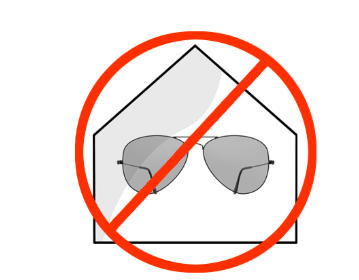
Tinted not recommended for indoor
|
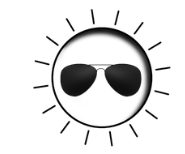
Darkens outdoors in seconds[1]
|

Dark in hot temperatures[3]
|

Activates in the car[5]
|

Activates in the car
|

Blocks 100% UVA & UVB rays. Filters up to 32% of blue-violet light indoors and up to 85% outdoors 2[2] |

Blocks 100% UVA & UVB Help protect from UV and filter blue-violet light [4] |

Blocks 100% UVA & UVB Help protect from UV and filter blue-violet light [7] |

Blocks 100% UVA & UVB |

Returns clear faster than ever
|

Darkens in the car[5]
|

Less glare up to 90% Polarization efficiency[8]
|

Always polarized
|
Check with your lens supplier for remaining availability for Transitions® GEN 8™ lenses.
* The darkest in hot temperatures & in the car, blocking 100% UVA & UVB and offering the best overall blue-violet filtration across light situations*among clear to extra dark photochromic lenses. *filtering blue-violet (between 400 and 455nm ISO TR 20772:2018) among polycarbonate and CR39 gray lenses with a premium anti-reflective coating: filtering (I) up to 45% indoors at 23°C, (II) up to 64% behind the windshield, (III) up to 86% outdoors at 23°C and (IV) up to 83% outdoors at 35°C.
** EcoOptics Limited - Prof. Nicholas Roberts, Quantitative study evaluating the visual benefits of the polarization properties of lenses compared to similar non-polarized lenses, 2019/2020.
*** Style Mirrors are available where gray and brown Transitions® XTRActive® are available. Specify Transitions lenses in style mirrors (no substitutions) with your lab to ensure authenticity.
[1] For polycarbonate & CR39 lenses across colors achieving 18% transmission at 23°C.
[2] For polycarbonate and CR39 lenses across colors. Blue-violet light (measured between 400nm and 455nm (ISO TR 20772:2018)
[3] Clear to extra dark photochromic category. Polycarbonate and 1.5 gray lenses tested at 35°C achieving <1%T using Transitions Optical's standard testing method
[4] Transitions® XTRActive® filters up to 45% of blue-violet light indoors and up to 86% of blue-violet light outdoors. Tests performed on gray lenses with a premium anti -reflective coating. Blue-violet light is between 400 and 455nm (ISO TR 20772:2018)
[5] Clear to extra dark photochromic category. Polycarbonate and 1.5 gray lenses tested at 23°C behind the windshield achieving between 18%T and 43%T.
[8] Less glare up to 90% Polarization efficiency.
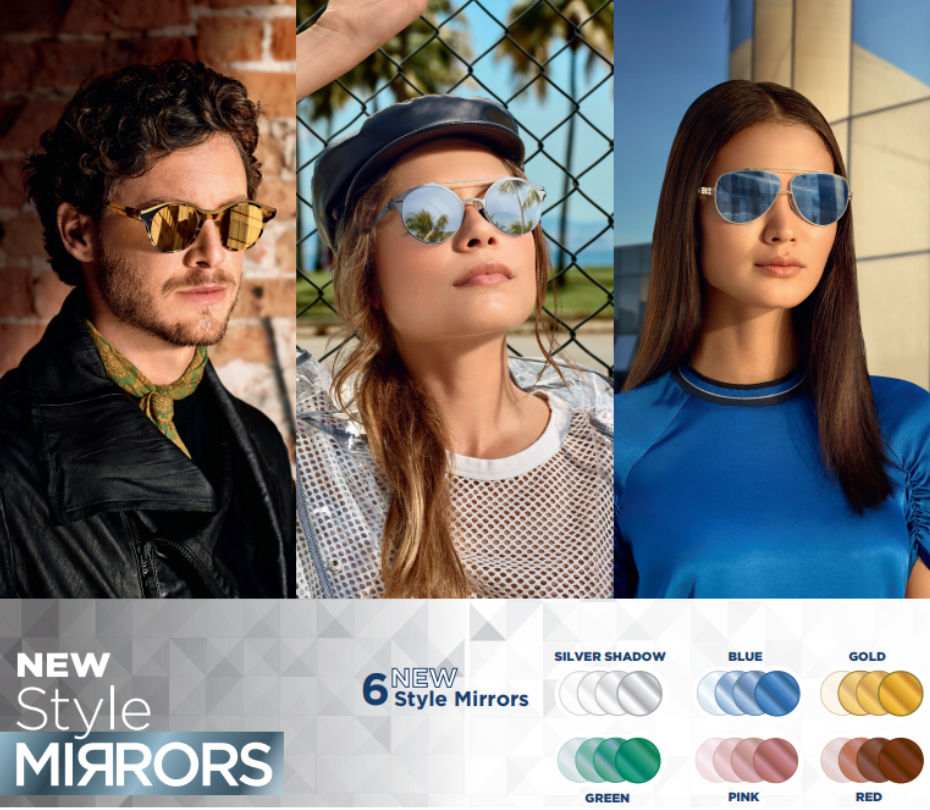
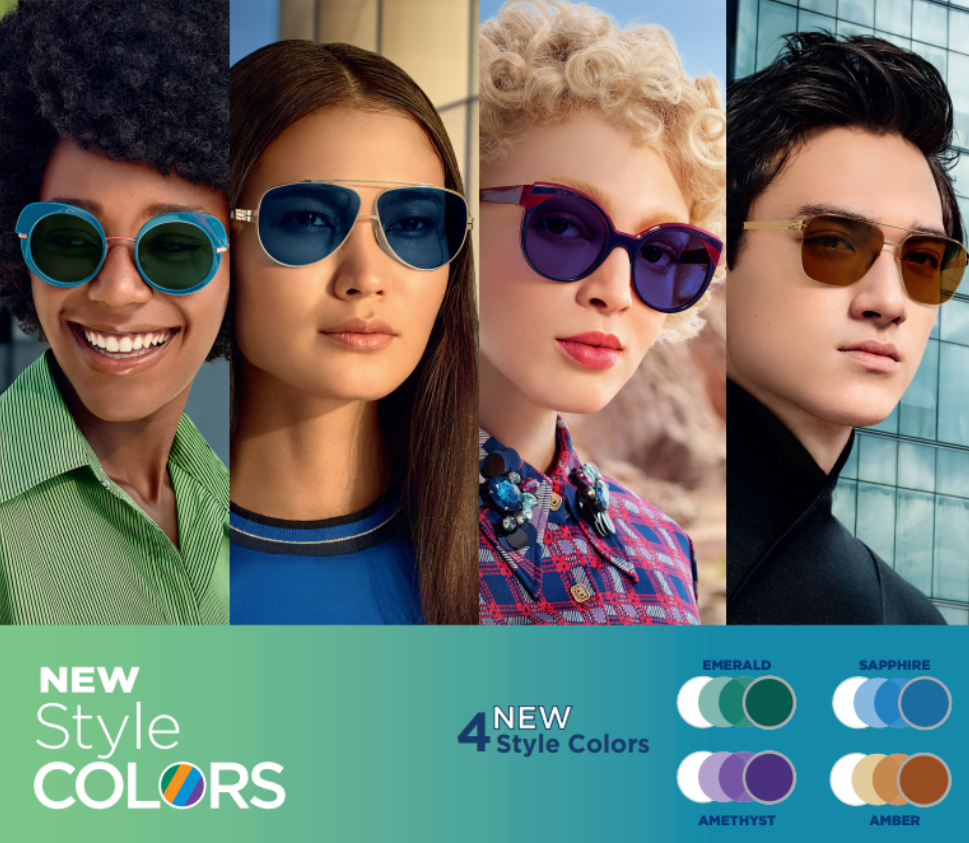
Lens Coatings
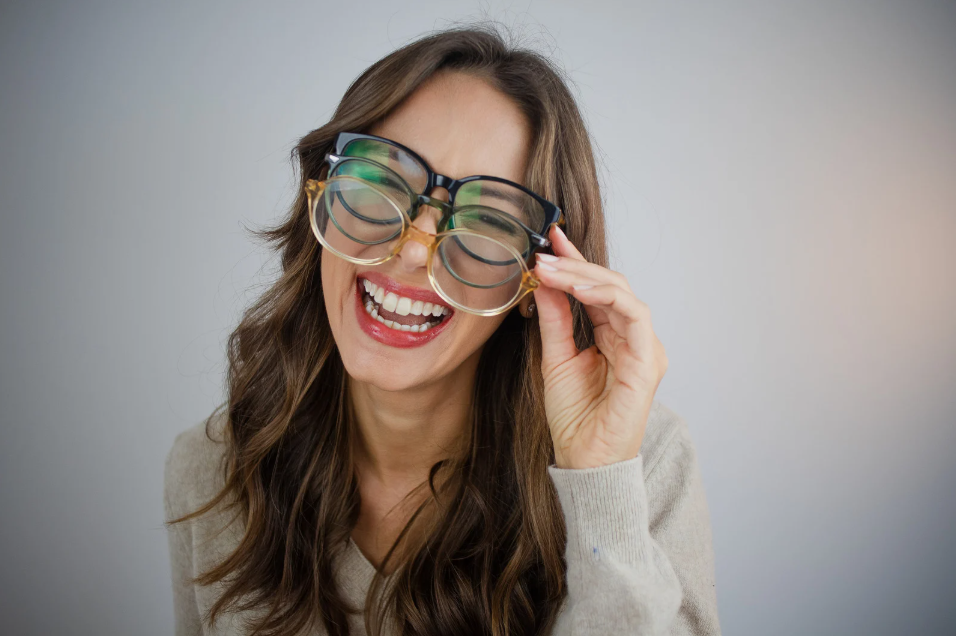
Anti-Reflective/Anti-Glare Coatings:
Like polarized lenses, anti-reflective coatings help reduce glare. However, unlike polarized lenses, anti-reflective coatings (AR) are coatings that can be put on a lens after it has been made. When light passes through a lens, about 16% of it is reflected and bounces back into space, thus causing glare. Anti-reflective coatings allow 99% of the light to pass through the lens, thus, minimizing glare. AR is a popular lens option for regular glasses as it also has the cosmetic feature of looking like there is no lens in your glasses. However it also has the drawback of needing to be kept clean. Any dirt or fingerprints will be magnified with an AR coated lens. This is a good option for clear glasses that are used at night as artificial lighting often causes unnecessary glare. For sunglasses, a back surface AR coating is often used. It is used on the backside so that any light that comes in through the back of the lens is not reflected back into the eye. This option is highly recommended for lenses with mirror coatings as back reflectance is more noticeable with a mirror.
If you need blue light protection, there are not Blue Light Anti- Reflective Coatings that can be added to help protect from damaging blue light as well.

Fog Coatings:
Fogging is a problem in sports. We offer several types of fog coatings to combat fogging. Some coatings are single sided (coating on inside of lenses) or double sided (recommended if using for insert products.
Optifog by Essilor. The Optifog product comes with either a hard scratch coating or Crizal Anti-reflective coating. Optifog is technically not a coating. It is built directly into the lenses during the curing process. Thus, manufacturing time is a bit longer. It is a double sided coating. This fog coating works in conjunction with an activator cloths that last for about a week. (4 cloths, each lasting 3 months included--more can be purchased). Includes TD2 Scratch coating with a 2 year warranty on scratches. The only downside to this coating is that it can't be tinted.
IC No Fog: Coating stays activated for a few days, and you can rejuvenate the coating with the drops. Coated on both sides of the lenses (unless you order a mirror or anti-reflective coating--then it is backside only). This coating is flexible and can be added to any tints and mirror coated lenses including photochromics. If you order a lens that cannot be coated with the specified coating you order, we will substitute for this brand. See brand information on IC No Fog website.
IC No Fog Elite: Permanent fog coating that does not need "activation". Similar to the Optifog coating, this coating cannot be used on tinted lenses. The advantage of IC No Fog Elite is that it doesn't require any activation so you don't need to remember to bring your activator along while you play. (note: lens will have a tacky like feel to it, and won't be smooth to run your cloth across it.
Essilor Fog Free: Backside only fog coating with a front side Anti- Reflective (AR) coating. Available with clear or Transitions lenses only. Essilor branded lenses only. No reactivation needed.
Basic Fog Coating: Our basic fog coating is applied only to the backside of the lenses. It doesn't have to be reactivated but lenses will have a sticky surface. Since it is a low end coating, it does have the tendency to break down faster. Cannot be tinted. This does have a low prescription limitation and is only available on certain products.
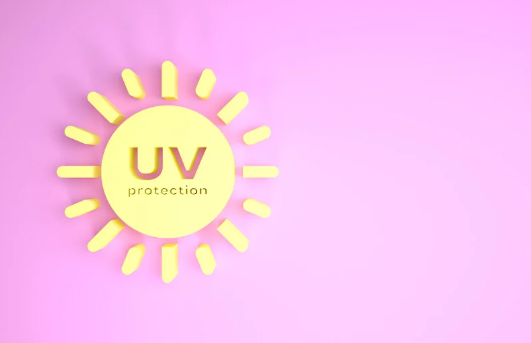
UV Coating:
Another coating that can be added to your glasses is an ultraviolet (UV) coat. Just like sunscreen, this is a necessary coating for all sports glasses that will be used outdoors as UV has been linked to serious eye diseases including cataracts. What is the purpose of sunglasses if they don't protect your eyes? UV coating is included with the following lenses: All polycarbonate and Trivex lenses, polarized or photochromatic lenses.
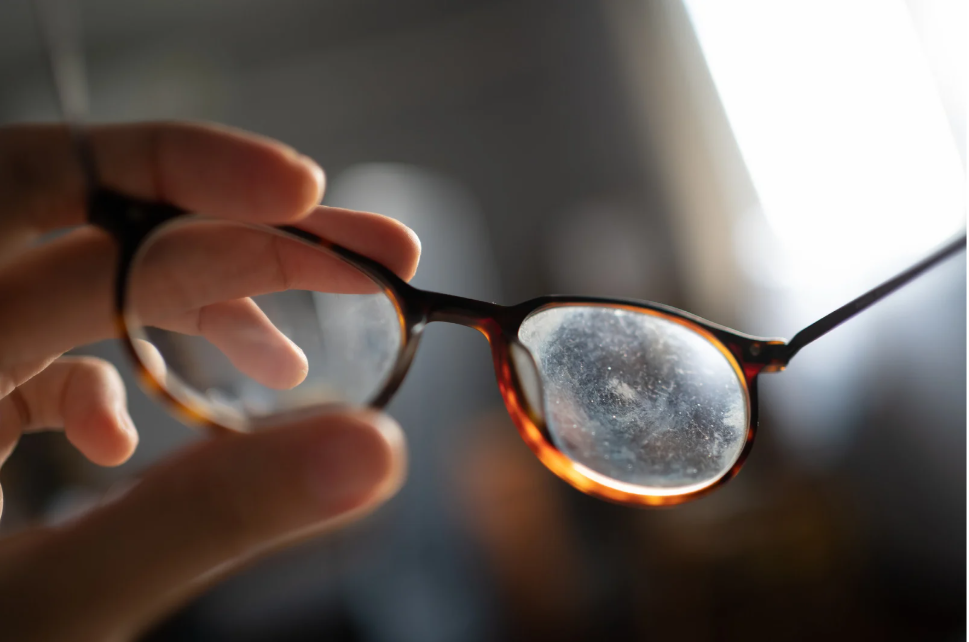
Scratch Coating:
Another coating that can be added to a lens is scratch resistant coatings. However, the name is misleading. Scratch resistant means that a coating is placed on the lens so that lens itself does not scratch. You can still easily scratch the coating which will seem like scratches until the coating is removed and replaced. What scratch resistant coatings do is essentially prolong the life of your lenses. The nice thing about the coatings is that they add a warranty to your lenses against scratching (1-2 years depending on the brand of coating)